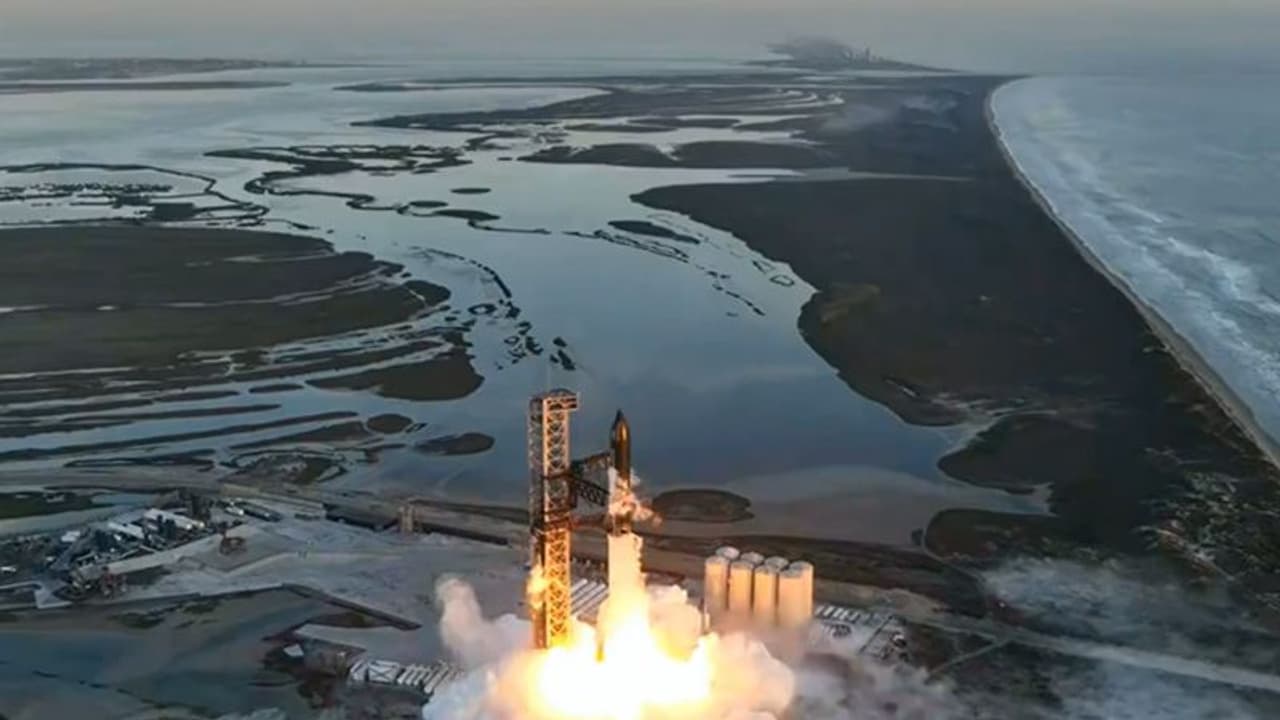SpaceX's uncrewed spacecraft Starship reached space for the first time on Saturday but was presumed to have failed minutes later, in a second test after its first attempt to reach space ended in an explosion.
SpaceX's uncrewed spacecraft, Starship, designed for transporting astronauts to the moon and beyond, achieved its first journey into space on Saturday. However, moments later, it was presumed to have encountered a failure in its second test, following a previous attempt that resulted in an explosion during its initial space endeavour.

The two-stage rocketship took off from SpaceX's Starbase launch site near Boca Chica, Texas, with the intention of a planned 90-minute spaceflight. Unfortunately, contact with the spacecraft was lost approximately 10 minutes after liftoff, as reported by a company broadcaster.
"We have lost the data from the second stage... we think we may have lost the second stage," SpaceX's livestream host John Insprucker said.
SpaceX's attempt today comes after a first attempt to fly the spaceship in its fully-stacked configuration back in April ended in a spectacular explosion over the Gulf of Mexico.
The rocket blasted off from the company's Starbase in Boca Chica, Texas shortly after 7:00 am local time (1300 GMT).
Despite the Super Heavy booster undergoing a "rapid unscheduled disassembly," SpaceX engineers deemed today's rocket launch highly successful. SpaceX maintains that early-stage explosions in rocket development are considered valuable, as they expedite the learning process and inform design decisions more rapidly than ground tests.
The second launch proved more successful than the company's initial attempt in April. Any data collected from today's launch will be utilized to guide future modifications to the rocket, according to SpaceX.
During its inaugural test flight on April 20, SpaceX had to intentionally detonate Starship four minutes after launch due to a failure in the separation of the two stages. The rocket disintegrated into a fiery ball, ultimately crashing into the Gulf of Mexico and generating a dust cloud that reached a town several miles away.
After a month-long investigation, the Federal Aviation Administration (FAA) granted clearance to SpaceX on Wednesday to proceed with another attempt, despite opposition from conservation groups. These groups are suing the regulator, asserting that it failed to adhere to environmental laws.
SpaceX maintains that explosions during the early stages of rocket development are beneficial for informing design choices more rapidly than ground tests. However, time is of the essence as a modified Starship needs to be prepared for a scheduled lunar landing in 2025.
The primary modification since the initial launch pertains to how the spaceship separates from the booster. Starship now employs "hot staging," igniting upper stage engines while still attached to the booster, a method commonly used in Russian rockets that could unlock significantly greater power.
Additional changes include enhancements to vents aimed at reducing the likelihood of an explosion.
The inaugural launch inflicted substantial damage to the company's Starbase launchpad. To address this, the launchpad has undergone reinforcement using high-strength concrete. Additionally, a water jet system has been implemented to safeguard against the intense heat and force generated during the launch.
